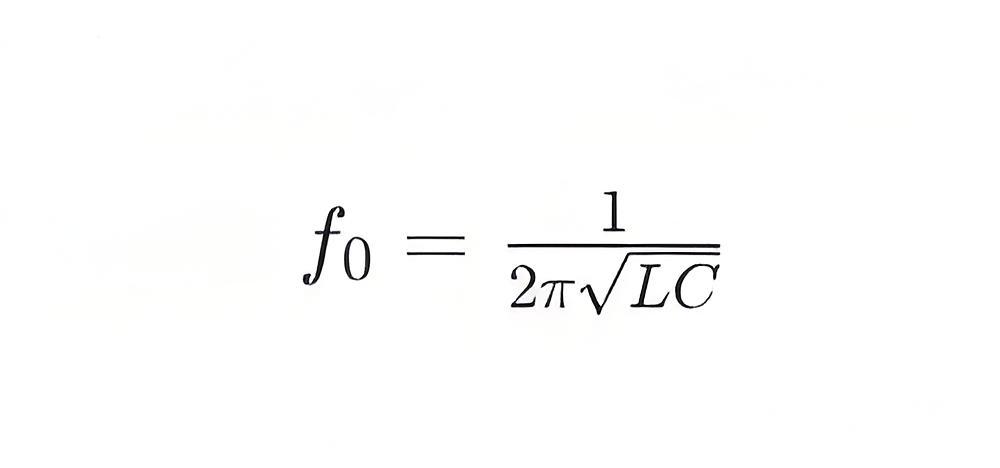What is the significance of series resonance?
The Significance of Series Resonance
Series resonance is a special phenomenon that occurs in a circuit consisting of an inductor L, a capacitor C, and a resistor R connected in series. When the frequency of the circuit reaches a specific value, the reactance of the inductor and capacitor cancel each other out, resulting in the minimum total impedance and maximum current in the circuit. Series resonance plays a significant role in various fields such as radio communication, filter design, oscillators, sensors, and power systems. Below are the main significances and applications of series resonance:
1. Minimum Impedance and Maximum Current
Characteristics at Resonant Frequency: At the resonant frequency f0, the reactance of the inductor L and capacitor C completely cancel each other out, leaving only the resistance R to determine the total impedance. At this point, the impedance is minimized, approaching R, and the current in the circuit reaches its maximum value.
Formula: The resonant frequency f0can be calculated using the following formula:

Ideal Zero Impedance: In an ideal case with no resistance (i.e., R=0), the series resonant circuit theoretically achieves zero impedance at resonance, leading to infinite current. However, in practical applications, resistance is always present, so the current does not become infinite but still increases significantly.
2. High Selectivity
Frequency Selectivity: A series resonant circuit exhibits extremely high frequency selectivity at its resonant frequency, effectively selecting or rejecting specific frequency signals. This makes it ideal for use in tuning circuits in radio receivers, helping to select the desired broadcast frequency while suppressing interference from other frequencies.
Narrowband Filtering: Due to its high Q factor (quality factor), a series resonant circuit operates within a very narrow frequency band, achieving precise frequency selection and filtering. This makes it highly useful in applications requiring high frequency resolution, such as audio processing, communication systems, and signal processing.
3. Energy Storage and Exchange
Energy Exchange Between Inductor and Capacitor: In a series resonant circuit, energy continuously exchanges between the inductor and capacitor without requiring continuous energy input from an external source. This energy exchange represents reactive power, which does not directly perform useful work but maintains oscillation within the circuit. This characteristic makes series resonant circuits suitable for use in oscillators and sensors.
Low Losses: Since the series resonant circuit has minimum impedance at resonance, it allows for driving large currents with small voltages, reducing energy losses and improving system efficiency.
4. Oscillator Applications
Stable Oscillation Frequency: Series resonant circuits are commonly used in oscillators, particularly in crystal oscillators and LC oscillators. Due to their high Q factor and excellent frequency stability, they provide a very stable oscillation frequency, widely used in clock circuits, wireless communication devices, and test instruments.
Easy Start and Sustained Oscillation: The low impedance characteristic of a series resonant circuit enables it to start and maintain oscillation with lower feedback gain, simplifying the design and debugging process of oscillators.
5. Filter Applications
Bandpass Filter: A series resonant circuit can function as a bandpass filter, allowing signals within a specific frequency range to pass while suppressing other frequencies. Its high Q factor ensures excellent filtering performance, making it suitable for audio processing, communication systems, and signal processing.
Notch Filter: A series resonant circuit can also serve as a notch filter (or band-stop filter), creating a "notch" at a specific frequency to block that frequency's signal. This characteristic is useful for eliminating interference signals or noise.
6. Sensor Applications
High Sensitivity: The high sensitivity of a series resonant circuit at its resonant frequency makes it ideal for sensor design. For example, piezoelectric sensors, capacitive sensors, and inductive sensors can utilize series resonance to enhance measurement accuracy and response speed.
Self-Excited Oscillation: Some sensors (such as vibration sensors) can achieve self-excited oscillation through a series resonant circuit, detecting small physical changes like vibration, pressure, or temperature variations.
7. Power System Applications
Resonant Grounding: In power systems, series resonance can be used in resonant grounding techniques, where the values of inductance and capacitance are chosen to create resonance under fault conditions, thereby reducing fault currents and protecting equipment from damage.
Harmonic Filtering: Series resonant circuits can be used in harmonic filters to eliminate harmonic components in power systems, improving power quality and reducing the impact on sensitive equipment.
8. Radio Communication Applications
Antenna Tuning: In radio communication, antennas often need to be tuned to a specific operating frequency. A series resonant circuit can help achieve precise antenna tuning, ensuring effective signal transmission and reception.
Transmitters and Receivers: Series resonant circuits are widely used in transmitters and receivers to select and amplify specific frequency signals while suppressing interference from other frequencies, improving communication quality and reliability.
Summary
A series resonant circuit has significant importance in many fields, including radio communication, filter design, oscillators, sensors, and power systems. Its key advantages include minimum impedance, maximum current, high frequency selectivity, energy storage and exchange, stable oscillation frequency, and high sensitivity. Understanding the principles and applications of series resonance helps engineers better design and optimize various electronic systems, enhancing their performance and efficiency.
The Electricity Encyclopedia is dedicated to accelerating the dissemination and application of electricity knowledge and adding impetus to the development and innovation of the electricity industry.













